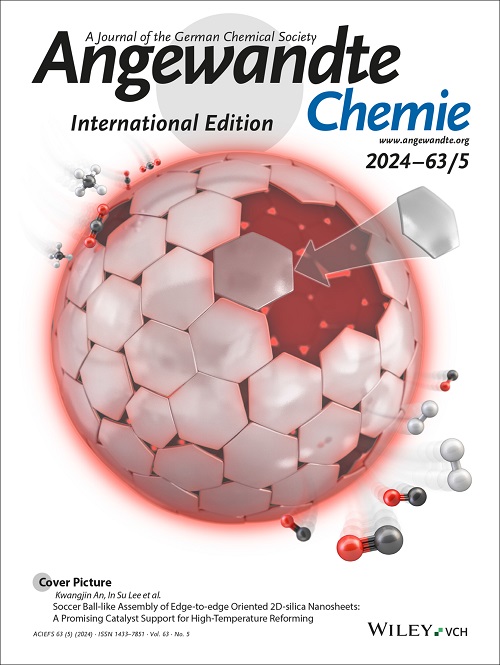Synthesis of Abiotic Supramolecular Polymers Inside Living Cells via Organocatalysis-Mediated Self-Assembly
IF 16.1
1区 化学
Q1 CHEMISTRY, MULTIDISCIPLINARY
引用次数: 0
Abstract
Cells execute mesmerizing functions using supramolecular polymers (SPs) formed through the self-assembly of biological precursors. Integration of the vast array of synthetic SPs with living cells would offer a powerful way to remold cellular functions and bridge the gap between synthetic materials and biological realm, yet remains a challenge because of the lack of robust abiotic SP systems that can be triggered to self-assemble inside cells. Here, we report how fully abiotic SPs can be synthesized inside living cells via an organocatalysis-responsive self-assembly strategy, and how the in situ-generated SPs are capable of interfering with cellular functions. The incorporation of a nucleophilic organocatalyst (CAT) into living cells accelerates the intracellular conversion of hydrazide (H) and aldehyde-derived precursors (A) to hydrazone-based monomers (HA3) that locally self-assemble into SPs. Interestingly, the in situ-generated SPs possess ignorable effects on cell viability and proliferation but remarkably hinder the cell migration. Furthermore, the presence of SPs is found to retard intracellular diffusion and alter the organization of actin cytoskeleton, both of which are suggested to be responsible for the hindered cellular migration. In considering of the vastly wide range of synthetic SPs, tremendous non-natural cellular functionalities can be obtained by in situ-synthesizing SPs.求助全文
约1分钟内获得全文
求助全文
来源期刊
CiteScore
26.60
自引率
6.60%
发文量
3549
审稿时长
1.5 months
期刊介绍:
Angewandte Chemie, a journal of the German Chemical Society (GDCh), maintains a leading position among scholarly journals in general chemistry with an impressive Impact Factor of 16.6 (2022 Journal Citation Reports, Clarivate, 2023). Published weekly in a reader-friendly format, it features new articles almost every day. Established in 1887, Angewandte Chemie is a prominent chemistry journal, offering a dynamic blend of Review-type articles, Highlights, Communications, and Research Articles on a weekly basis, making it unique in the field.

 求助内容:
求助内容: 应助结果提醒方式:
应助结果提醒方式:


